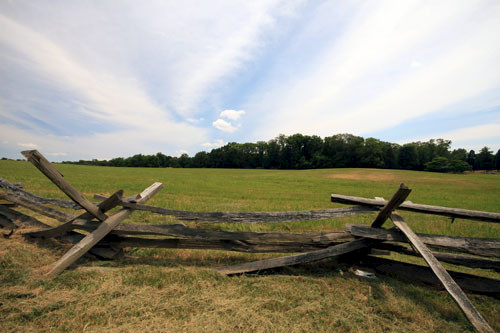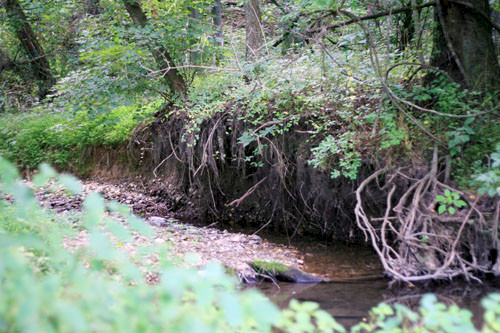The Battlefields
Jane Thomas ·Bill Dennison and Jane Thomas from IAN spent the last two days up at Monocacy National Battlefield and Manassas National Battlefield Park. They are part of the National Capital Region Network of parks, and IAN is in the process of conducting a natural resource condition assessment of these two parks, along with Antietam National Battlefield.

Although they are also managed as cultural resource parks, these two parks have similar natural resource features and challenges. Features include the warm-season grasslands which have been and continue to be restored. These grasslands are ecologically diverse and provide important habitat for birds, small mammals, and insects, as well as being part of an effective riparian buffer.

Forests also provide important habitat for FIDS (forest interior dwelling species of birds).

Challenges to the natural resources of these parks are mostly related to encroaching suburban and exurban development hemming these parks in on all sides.
One of these challenges is the overpopulation of white-tailed deer in the parks. Too many deer can lead to problems such as overgrazing of plants (preventing tree seedlings from establishing) and also with increasing surrounding development, many more deer will be hit by cars.

Increasing impervious surfaces surrounding the parks increases the amount of runoff (stormwater) delivered as high-flow pulsed events, instead of groundwater-based regulated flow. This increased rate flow during rain events erodes streambanks, resulting in incised streambanks.

We also learned some interesting facts about the battlefield parks. We had been wondering why some parks were named after what the Union army called the battle, and some were named after how the Confederates referred to the battle. We learned that the parks are named after how the victorious army referred to the battle. For example, take the battles (there were two) at Manassas National Battlefield Park. The Union army called them "Battles of Bull Run," while the Confederates referred to them as the "Battles of Manassas." The Confederates won these particular battles, so that's why the park is not called Bull Run National Battlefield. The same for Antietam National Battlefield - the Confederates called it the Battle of Sharpsburg, but the Union won that battle.
Another tidbit from Monocacy National Battlefield: Prior to its establishment as a National Park, logging activities were permitted in the area. A logger had noticed that trees from the area were ruining the saws in the mill because of all the lead bullets embedded in the trees.
All images (and more) are available at the IAN image library.

